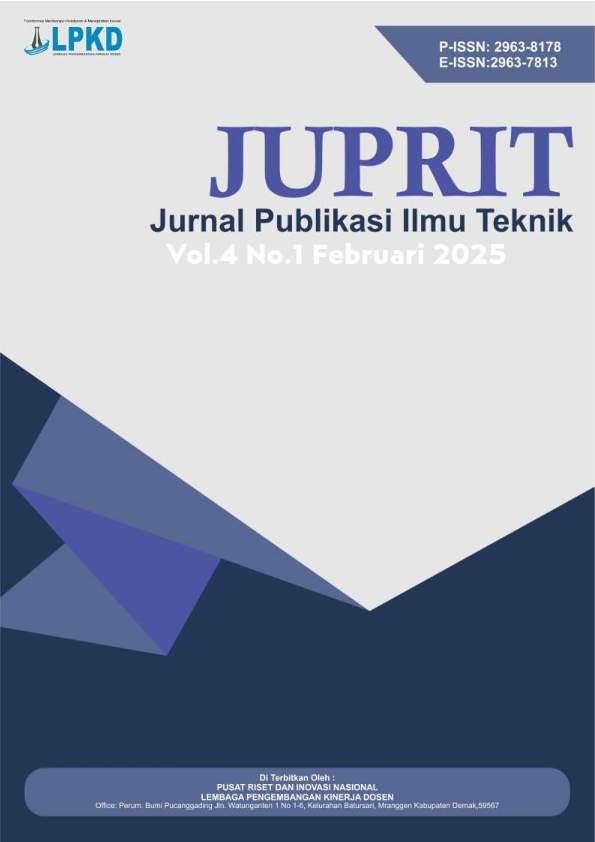Analysis of the Relationship Between Local Climate Zone and Land Surface Temperature in Padang City
DOI:
https://doi.org/10.55606/juprit.v4i1.4880Keywords:
Local Climate Zone, Land Surface Temperature, Remote SensingAbstract
Changes in the earth's surface temperature can have significant impacts on climate, environment, human health, and ecological systems. Global warming becomes increasingly complex when applied to urban contexts, which often experience urban heat island (UHI) effects. This study aims to analyze the relationship between Local Climate Zone (LCZ) and Land Surface Temperature (LST) in Padang City. This study identifies the distribution pattern of LCZ and relates it to surface temperature variability. The data used to map the local climate zone using samples made using WUDADPT and to determine land surface temperature using Landsat 8 OLI/TIRS C1 Level 1 Satellite Imagery. The results of this study are that the Local Climate Zone (LCZ) in Padang City consists of 13 classifications. The type of building that dominates Padang City is Open Low-rise. Meanwhile, Densee Trees dominate the type of natural land cover in Padang City. Land Surface Temperature (LST) in Padang City is dominated by low temperatures covering an area of 43,987.94 Ha. The relationship between LCZ and LST in Padang City has a coefficient of determination of 0.608, which means that the level of relationship between LCZ and LST shows a moderate relationship with the greatest influence occurring in the heavy industry classification with a coefficient of determination of 0.904, which means that the influence of heavy industry on temperature is 90.4% or very strong.
Downloads
References
Ahmed, S. H., & Adnan, M. (2018). Impact of urbanization on microclimate: A case study of Dhaka city. Urban Climate, 24, 109–118. https://doi.org/10.1016/j.uclim.2017.12.002
Astuti, S. T., & Nucifera, F. (2021). Geomedia majalah ilmiah dan informasi kegeografian identifikasi local climate zone sebagai upaya mitigasi urban heat island di Kota Semarang. Geomedia: Majalah Ilmiah dan Informasi Kegeografian, 19(1), 54–65. https://journal.uny.ac.id/index.php/geomedia/index
Cai, M. (2017). Investigating the relationship between local climate zone and land surface temperature. In 2017 Joint Urban Remote Sensing Event (JURSE 2017) (pp. 1–4). https://doi.org/10.1109/JURSE.2017.7924622
Ching, J. (2018). WUDAPT: An urban weather, climate, and environmental modeling infrastructure for the anthropocene. Bulletin of the American Meteorological Society, 99(9), 1907–1924. https://doi.org/10.1175/BAMS-D-16-0236.1
Choudhury, D. (2021). Investigating thermal behavior pattern (TBP) of local climatic zones (LCZs): A study on industrial cities of Asansol-Durgapur development area (ADDA), eastern India. Urban Climate, 35, 100727. https://doi.org/10.1016/j.uclim.2020.100727
Kumar, P., & Weng, Q. (2017). Urban heat island: A review of recent research and its impact on urban climate. Environmental Research Letters, 12(7), 073001. https://doi.org/10.1088/1748-9326/aa7c4a
Lee, J. H., & Brown, M. (2020). Investigating the effects of land use on local climate zones in urban environments. Environmental Science and Pollution Research, 27(10), 11112–11122. https://doi.org/10.1007/s11356-020-07745-9
Liu, Y., & Zhou, B. (2017). Modeling the urban heat island effect using the WUDAPT framework: A case study of Shanghai. Landscape and Urban Planning, 168, 108–117. https://doi.org/10.1016/j.landurbplan.2017.08.013
Memon, R. H., & Leung, D. (2017). Urban heat island effect and mitigation measures in the tropical regions. Science of the Total Environment, 615, 1052–1063. https://doi.org/10.1016/j.scitotenv.2017.09.072
Oke, T. R., & Taha, H. (2020). Urban climates and heat islands: A comprehensive review of the UHI effect. Atmospheric Environment, 227, 117364. https://doi.org/10.1016/j.atmosenv.2020.117364
Santamouris, M., & Kolokotsa, D. (2019). Urban climate and the building environment: A review of the impacts of the urban heat island on buildings. Energy and Buildings, 199, 129–142. https://doi.org/10.1016/j.enbuild.2019.06.035
Stewart, I. D., & Oke, T. R. (2012). Local climate zones for urban temperature studies. Bulletin of the American Meteorological Society, 93(12), 1879–1900. https://doi.org/10.1175/BAMS-D-11-00019.1
Wu, L., & Huang, C. (2019). The role of green spaces in mitigating urban heat islands: A case study of Guangzhou. Environmental Pollution, 249, 220–229. https://doi.org/10.1016/j.envpol.2019.03.085
Zellatifanny, C. M., & Mudjiyanto, B. (2018). Tipe penelitian deskripsi dalam ilmu komunikasi. Diakom: Jurnal Media dan Komunikasi, 1(2), 83–90. https://doi.org/10.17933/diakom.v1i2.20
Zhang, Y., & Li, L. (2021). The relationship between vegetation cover and urban heat island mitigation: A systematic review. Urban Forestry & Urban Greening, 58, 126914. https://doi.org/10.1016/j.ufug.2021.126914
Downloads
Published
How to Cite
Issue
Section
License
Copyright (c) 2024 Jurnal Penelitian Rumpun Ilmu Teknik

This work is licensed under a Creative Commons Attribution-ShareAlike 4.0 International License.








